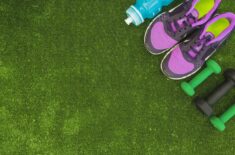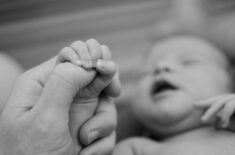Is It Harmful To Microwave Baby Food In Plastic Containers?
Yes. Microwaving baby food in plastic containers might pose health risks to your baby and young children. Thankfully, you can still safely heat it in a microwave-safe, non-plastic dish (see below). (1)
The microwave oven is one of the most useful and popular kitchen appliances. Many families use it for heating and preparing different foods, including baby food.
But is this a healthy and safe way to heat our food?
Researchers of a 2023 study published in the Environmental Science & Technology journal found that plastic containers can release an alarming amount of tiny plastic particles into baby food (or other stuff being heated) when microwaved. (1)
The following are the estimated numbers of plastic particles that can be released per square centimeter of container microwaved for just three minutes at full power (using a 1,000-watt microwave oven): (1)
- 4.22 million microplastic particles (these are plastic particles less than 5mm long)
- 2.11 billion nanoplastic particles (they’re 1,000x smaller than microplastics)
The amounts of particles released under these microwave settings can vary.
However, the study showed that food pouches made of polyethylene (PE) can release more plastic particles than polypropylene (PP) containers. (1)
Both types of plastic containers are commonly used in food containers. They’re also FDA-approved for food use. (2)
The Possible Harmful Effects Of Plastic Particles On Your Baby (& Entire Family)
To mimic the concentrations that babies and toddlers might accumulate with regular exposure to microwaved food, the researchers of the 2023 study mentioned above also tested the plastics’ effect on human embryonic kidney cells. (1)
The results were startling:
These further tests showed that only about 23% of kidney cells might survive exposure to these plastic particles over time. (1)
About 76.70% of kidney cells can die after 48 hours of exposure, and the number can go up to 77.18% after a 72-hour exposure. (1)
The researchers explained that further studies are needed to determine the actual effects of microplastics because the study above was conducted in a laboratory (in vitro) setting. (1)(3)
According to the study’s lead author, Kazi Albab Hussain, more research is also needed to determine which plastic types release the least amount of particles (microplastics + nanoplastics). (3)
He hopes that future research might also help discover and produce a type of plastic material that doesn’t release any (or will only lead to a negligible amount) of these particles when microwaved. (3)
The 2023 Study Design & Results
The researchers conducted the test using various reusable plastic food pouches and containers filled with clean water (to simulate aqueous or water-based food) or a substance used to simulate acidic food. (1)
Then, they heated the containers in the microwave as we normally would at home.

The images below show the size distribution of the microplastics that were released under different experimental conditions conducted in the study: (1)
Image (a) container 1 only (made of polyethylene material):
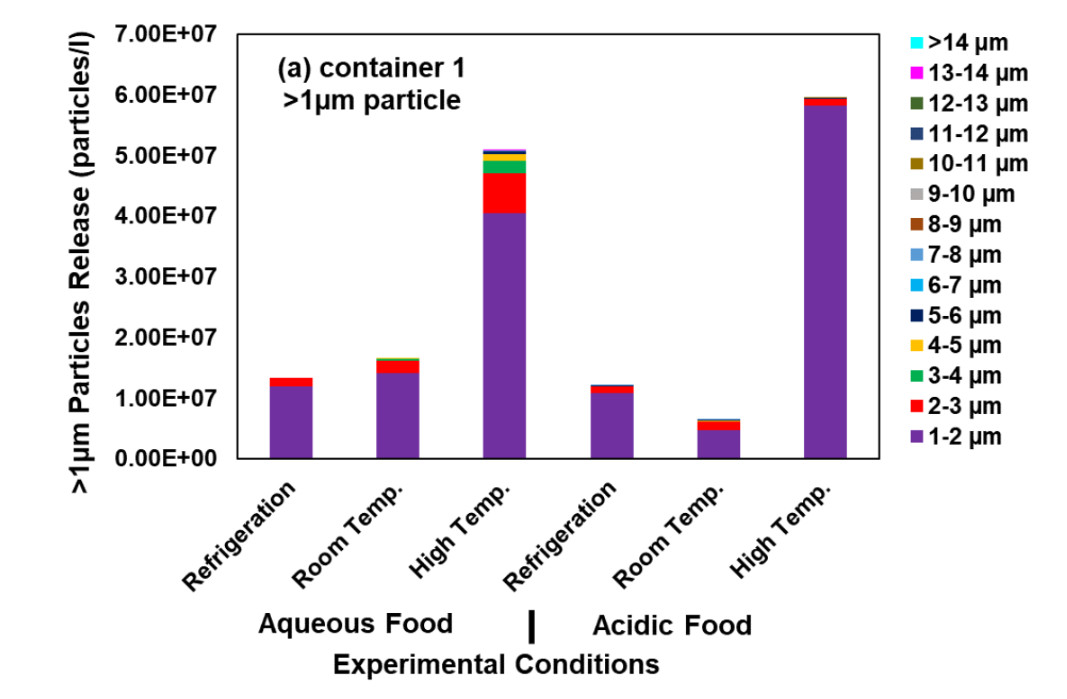
Image (b) container 2 only (made of polyethylene material):
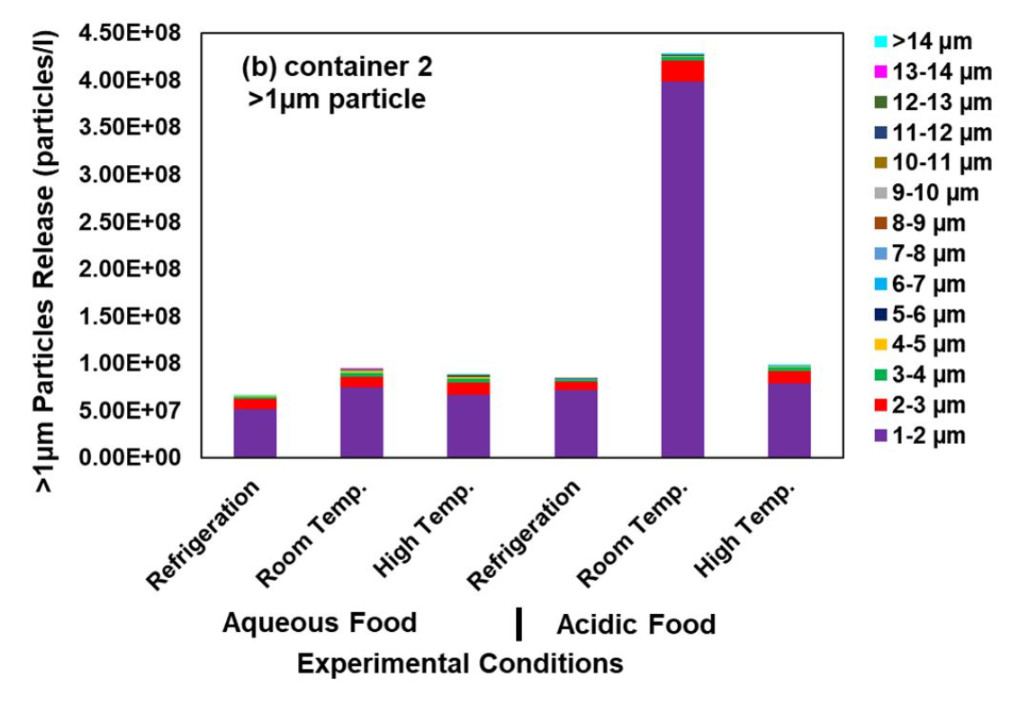
Image (c) pouch only (made of polyethylene material):
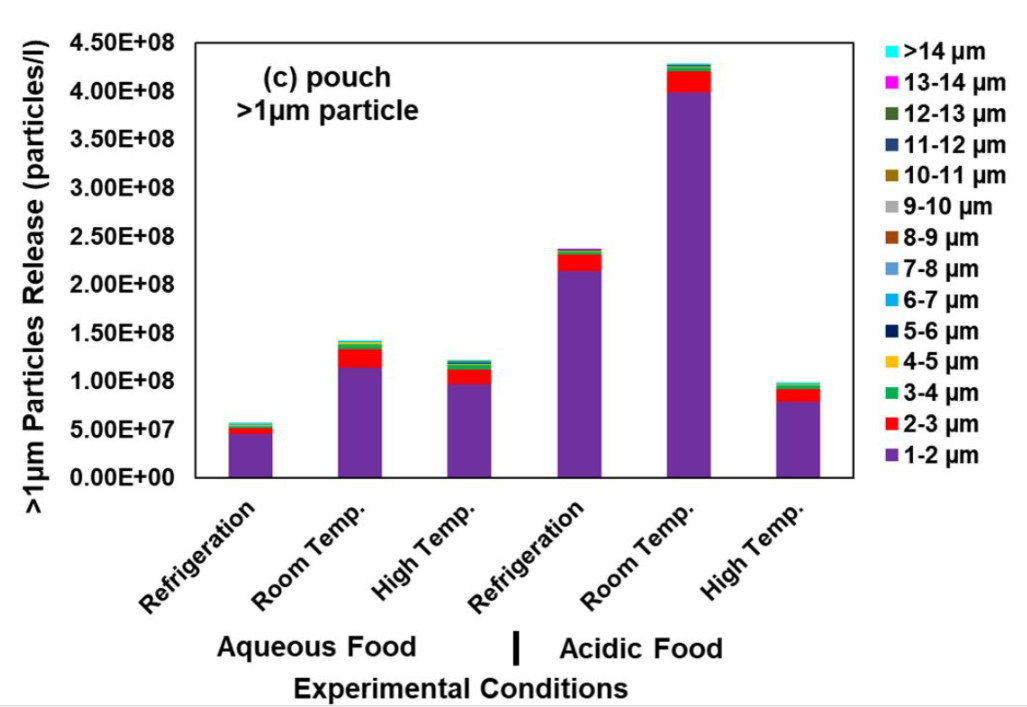
Image (d) The microplastics released from containers 1 and 2 under microwave heating for 3 minutes:
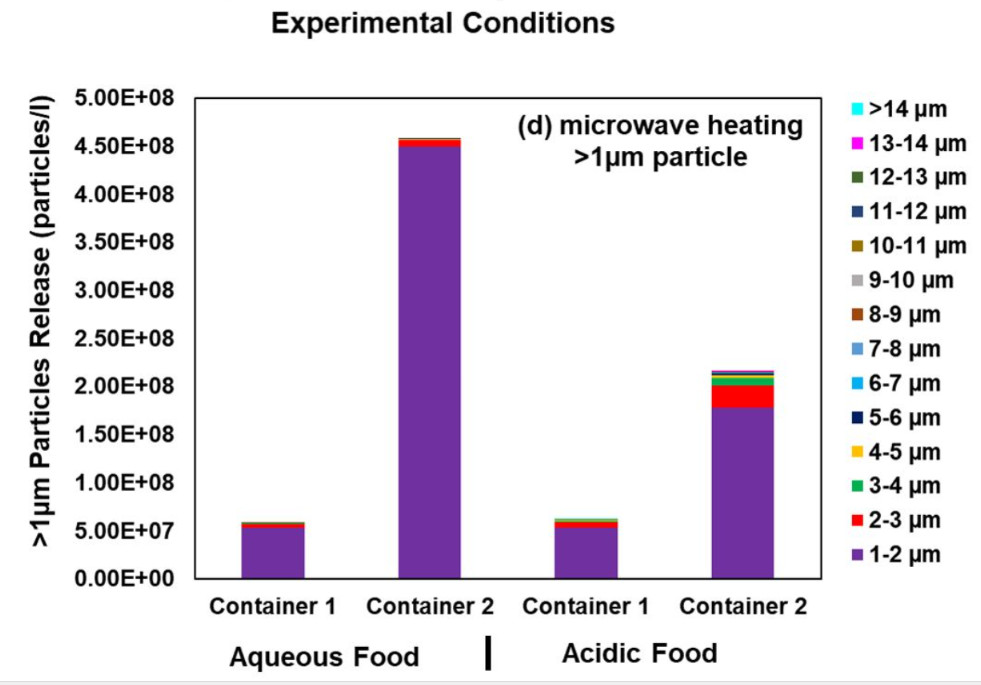
While these plastic pieces might be really tiny, the high volume of particles released from the container might negatively affect your little one’s still-developing body.
Also, it should be noted that the billions of nanoparticles and millions of microplastic particles per square centimeter of plastic material mentioned above only accounted for one container. (1)
Your child may be exposed to more plastic particles if they regularly eat microwaved food.
The researchers of the study mentioned above also created exposure models based on the possible intake of children at home. (1)
These models showed that infants and toddlers have the highest estimated daily intakes of the following: (1)
- Babies drinking microwaved water: 20.3 ng/kg·day
- Toddlers eating microwaved dairy (or other food products) from polypropylene containers: 22.1 ng/kg·day
Is Baby Food In Plastic Containers Safe (If Not Microwaved)?
Now, you might wonder whether storing baby food in plastic containers is fine if you don’t microwave them.
While they’re convenient (and cheap) for storing baby food, the bad news is that these plastic bags and containers can still be dangerous, even if they’re not placed inside the microwave oven. (1)
The 2023 study above also checked for the effects of refrigeration or room-temperature storage on the container’s content. (1)
According to the study authors, refrigeration and storage at room temperature for over six months can still release millions of microplastics and billions of nanoplastics. (1)
So, that can mean that storing baby food in plastic containers for 6+ months can also have a similar effect to heating them in the microwave oven.
We highly recommend reducing or eliminating your family’s exposure to foods packaged in plastic. As much as you can switch to glass, stainless steel, or food-grade silicone.
Is It Safe To Put Baby Food In A Microwave (Using Non-Plastic Containers)?
Yes.
Microwaves are electromagnetic waves that heat food in microwave ovens by making the water molecules vibrate. The good news is that they don’t make the food radioactive. (4)(5)
According to experts, cancer risks associated with microwave usage are mainly due to your body’s direct exposure to microwaves. Thankfully, the government has strict guidelines to ensure that microwave ovens have special shields to keep electromagnetic radiation from leaking. (4)
It’s also a good idea to stand at least a few feet away from a working microwave oven while it’s in use.
IMPORTANT NOTE: Don’t use your microwave oven if any part is broken because that can lead to dangerous radiation leaks.
How To Safely Microwave Your Baby’s Food
The FDA doesn’t recommend microwaving your baby’s food in glass jars because it can result in uneven heating. (6)
Before heating, transfer it to a microwave-safe dish (but not plastic). This can let you spread the food more evenly on a bigger surface, stir, and test for taste and temperature. (6)
According to the FDA recommendation, you can heat around 4 oz of solid baby food (placed on a dish) on high power for about 15 seconds. (6)
Be sure always to stir the heated food. Then, let it stand for at least 30 seconds and test it before giving it to your baby. (6)
We at Motherhood Community recommend stove top or other methods of heating as the preferred way to heat your little’s food. We do this with our own babies and families.
How Do You Know If The Plastic Container Is Microwave Safe?
Plastic containers and other products that can be used in a microwave oven are usually marked with a “Microwave Safe” label or have an embossed box icon with wavy lines in it.
However, based on the study above, we don’t recommend using plastic containers for heating your baby’s food in the microwave.
References
(1) https://pubs.acs.org/doi/10.1021/acs.est.3c01942
(2) https://www.express.co.uk/life-style/health/1793564/microwaving-baby-food-plastic-containers-risk
(3) https://www.sciencedaily.com/releases/2023/07/230720124925.htm
(4) https://www.medicalnewstoday.com/articles/do-microwaves-cause-cancer#microwaves-and-cancer
(5) https://www.cancer.org.au/iheard/does-radiation-from-microwaves-cause-cancer
(6) https://www.fda.gov/food/people-risk-foodborne-illness/once-baby-arrives-food-safety-moms-be



